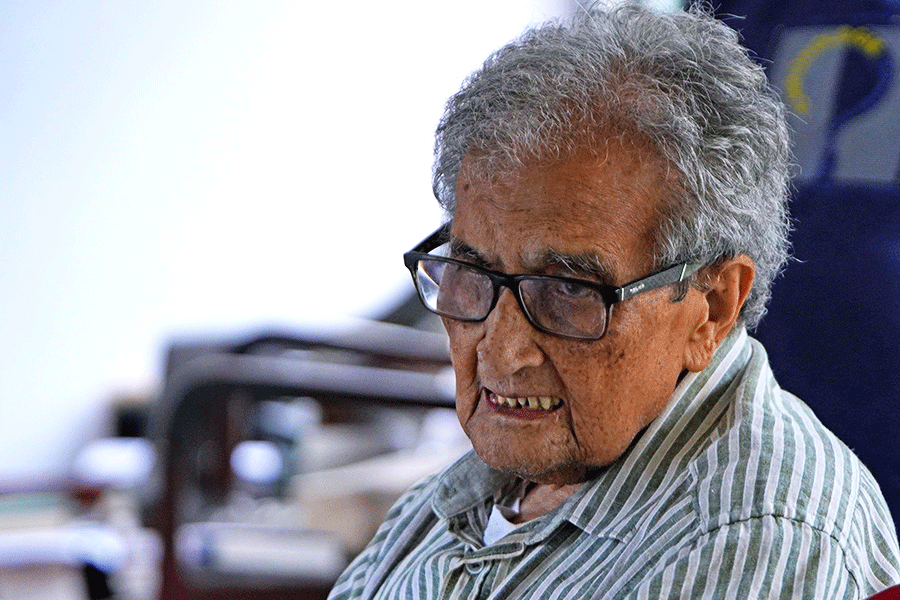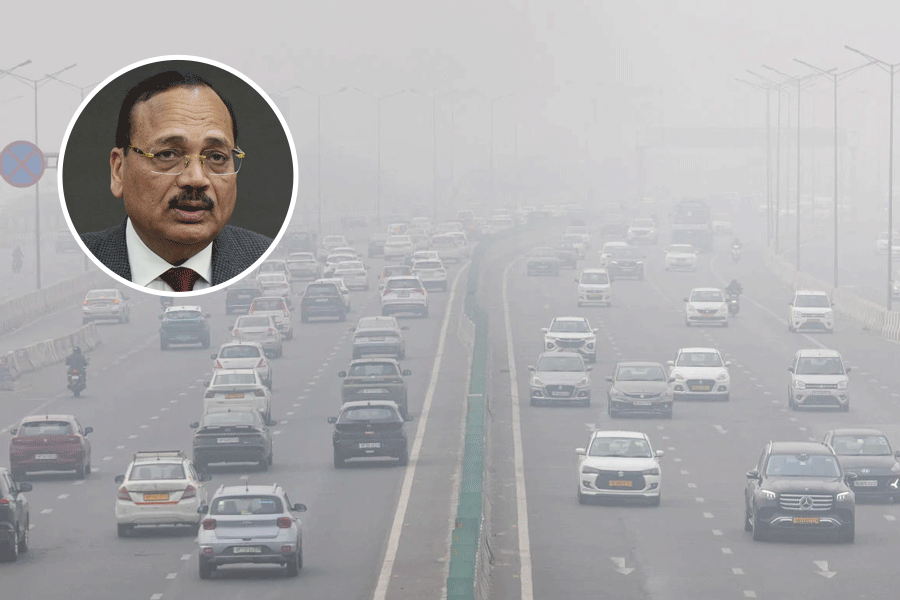 |
After retirement from the Indian civil service, Herbert Charles Fanshawe wrote Delhi — Past and Present, a useful guidebook on the city for visitors and residents alike. Apart from being suitably embellished with stories of valour and of torture around 1857, it provides a potted history of the various Delhis as well as interesting information from the census of 1901 and other government sources. Out of Delhi’s population of 208,000, over 50 per cent were Hindus and around 40 per cent were Muslims. The city, Fanshawe felt confident, would soon grow to be “one of the greatest trade centres in India” as well as a substantial manufacturing hub, primarily because it was served by five different railway systems. The municipal committee “has always been distinguished for its enlightenment”, spending generously on water works and drainage. On the other hand, Chandni Chauk (sic), Fanshawe lamented, was “sadly spoilt by the very modern frontages of many of the shops and houses”. He wrote appreciatively of Maiden’s Hotel, which was excellently managed and clearly the best place to live in, situated as it was within the civil station, or Civil Lines as it was known.
Fanshawe’s book predated the pomp and panoply of the coronation durbars of 1903 and 1911, and the shift of the capital of British India from Calcutta to Delhi. According to Rudrangshu Mukherjee (“Old seat for a new empire: Calcutta to Delhi”), in his lengthy letter to the secretary of state for India, Lord Crewe, the viceroy, Lord Hardinge, made an important political statement regarding why the shift was a judicious one: local self-government would flourish away from the workings of a provincial government. In any case, Calcutta was somewhat inhospitable after the partition of Bengal in 1905 and the “peculiar political situation” that followed. Besides, while among the masses the city was “revered as the seat of the former Empire”, Mukherjee adds that in the minds of Lytton and Curzon, choreographers of the durbars of 1877 and 1903, “the notion of imperial splendour had come to be associated with Delhi”.
Even before Edwin Lutyens, Herbert Baker and the many hundreds of officials, planners, architects, engineers and so on arrived in this somewhat arid plain, Delhi had started attracting a floating population of migrants. Besides, it was also home to a number already well settled in the walled city, many of whom had proved their loyalty to the British after 1857. In time, the Civil Lines became attractive to well-placed Indians such as the large extended family of St Stephen’s College-educated Rai Bahadur Raj Narain; two of his granddaughters, Sheila Dhar and Madhur Jaffrey, wrote delightful memoirs of their charmed lives. In Here’s Someone I’d Like You to Meet, Sheila, an accomplished Hindustani classical singer, writes of the extended family where her married aunts returned to their father’s home with their children as the schools were so much better in Delhi. At any given time, there were close to 60 persons who sat down to meals. Her perspicacious barrister-grandfather, Raj Narain had located his large establishment in Civil Lines in a large orchard, bought from a reward given to an ancestor by the British “presumably for services rendered”.
Over time, family partitions resulted in 24 bungalows in the orchard, each with its own lawn; those relatives who still lived within the walled city “were awed by the new Anglicized life style that was the ideal of each of these units”. Envy and admiration were the response to the breakfast of eggs, toast and jam rather than parathas and bhujia; even the women had learnt to eat with tea spoons. Only the men were entitled to forks and side plates in addition to spoons of various sizes. Scotch and soda replaced keora sharbat in the long summer evenings where the men relaxed on deep verandas after a game of tennis. Expectedly, such changes were hard for the women who were married into this family of British loyalists. Sheila Dhar’s grandfather accepted the necessary Westernization of his family and engaged an Englishwoman as tutor for his wife; apart from learning some stock phrases, the lady soon had her blouses adorned with ruffs and collars. She wore these with her well-starched cotton voile saris. That her puja room remained an integral part of her life apparently irked the Rai Bahadur, who “never lost an opportunity to needle my grandmother about the hocus pocus she engaged in”. However, writes Sheila, this was his official stance; he was quite relieved that his wife kept tradition alive in a fast-changing milieu.
Her younger cousin, Madhur Jaffrey (actor and food writer), titled her memoirs equally evocatively — Climbing the Mango Trees — and there she described a Delhi full of childhood joys, summer holidays in the hills and picnics in the monument-studded wilderness around the city that melded with the newly emerging present. Family picnics that never involved less than 30 persons were invariably a detailed exercise in planning and organization. To begin with, all had to be packed into a Dodge and a Ford in an orderly manner; this also included pots, pans, pre-cooked delicacies and durees that had been “coaxed” into the boots of the cars. Invariably, the destination was out and beyond Lutyens’ New Delhi, passing through Kashmiri Gate, St James’ Church and Red Fort on the way. Expectedly, Qutub Minar was the destination, and in the 1940s, to get to it one had to pass by fields of sarso and bajra. There were no restrictions against climbing the minaret and on a clear day, “we children could proprietorially survey all of the Delhis below us”. This 1930s photograph of the Qutub Minar with the Quwwat-ul-Islam mosque foregrounds rolling fields (picture), perhaps of the very kind where the Raj Narain family would picnic.
Picnics were reserved for spring and before the onset of deep winter; in summer there was the other north Indian experience of sleeping out in the open. These were pre-air cooler and air conditioner days when one would eye ceiling fans churning hot air with disgust and flee to the perfumed gardens outside. The extensive lawns were lined with 20 or more beds, each with its own mosquito net. Although Madhur and her cousins were up with the first rays of the sun, there was something primal about staring at the galaxy, looking out for a shooting star and trying not to hear the eerie hukka hua of a jackal in the distance. Clearly there was no fear of thieves — or maybe there was safety in numbers.
Two days after her 14th birthday, Madhur was taken by her father to India Gate. This was August 15, 1947 and, after battling through crowds, the pair stood on Kingsway (later renamed Rajpath) to watch Jawaharlal Nehru and Louis Mountbatten ride by in an open horse carriage. As the Union Jack came down and the Indian tricolour was raised “we screamed our lungs out. Thousands of caps were flung skyward. I felt giddy”. And then came the carnage and violence. The men in the family had earlier only handled guns when they went on shikar; now it was imperative to take them out on organized patrols. One night, the mob got frighteningly close and “we barricaded ourselves indoors, fearing for our men still patrolling the streets”. All were safe but things were not so good in the walled city. A cousin went out to the shops and did not return for days. And when he did, “he had lost his mind. Was he beaten, raped, tortured? He never spoke coherently after that”.
Gradually, as the Nehruvian era took over, the focus shifted to New Delhi with its imposing avenues, impossible roundabouts, distinctive building styles and the impersonality of a growing capital city. For Madhur, the newly established All India Radio, located in an interesting structure that combined a central dome with two wings, provided the opportunity for a foray into this part of the city; together with her cousins, she was often called upon to do radio plays. The authorities were assured of a posse of children, “all of whom could be counted on to read fluently” and “with expression”. Legacies of the raj appeared (and continue to appear) in all kinds of places: diction, hybrid cuisines, picnics and Western education being significant “spheres of influence”. And family cultures such as those of Rai Bahadur Raj Narain’s clan were porous enough to blend in and absorb what was necessary to get along in the melting pot of a fast-changing metropolis.










